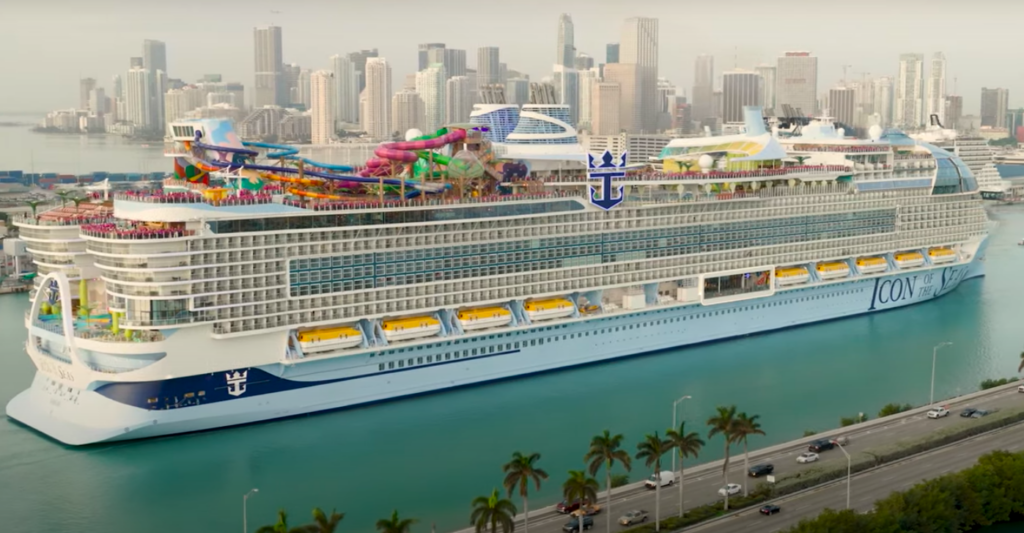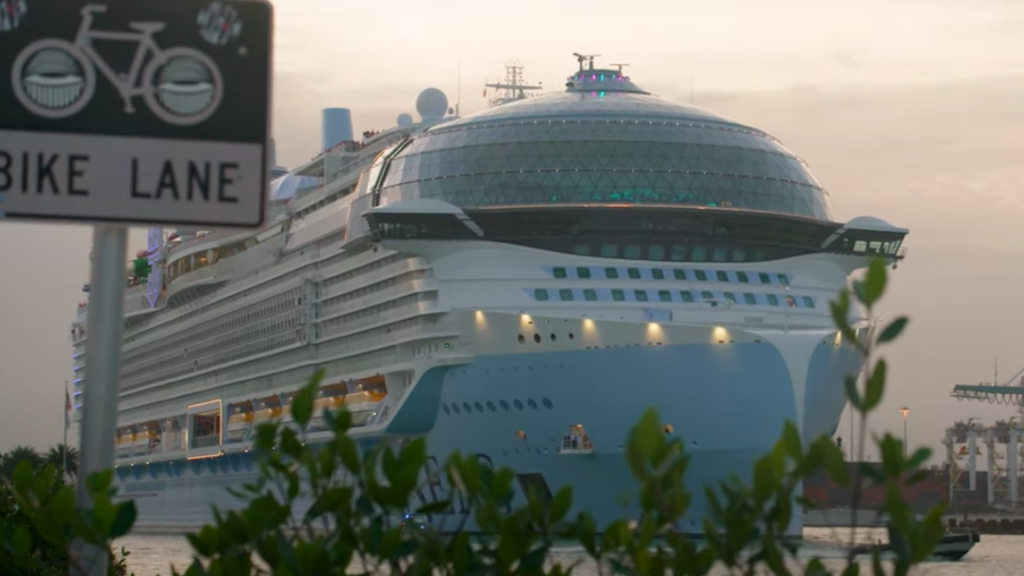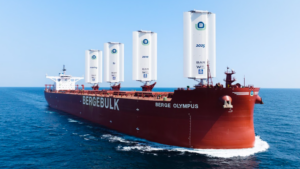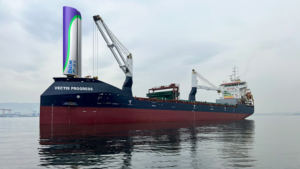World’s largest cruise ship sets sail amid LNG controversy
The world’s largest cruise ship, Icon of the Seas, has set sail on its maiden voyage from Miami, Florida, amid accusations of greenwashing over its emissions.
Royal Caribbean’s $2bn (£1.6bn) behemoth, which has earned the nickname the ‘human lasagne’ on social media, has seven pools, nine whirlpools and six waterslides. Icon of the Seas was welcomed with much fanfare when it arrived in Miami earlier this month ahead of its first seven-day Caribbean cruise.
At 365m in length, the 250,800GT ship is five times larger than the Titanic. It takes 2,350 crew members to look after the 5,610 guests over the 18 decks they have access to. The vessel has 20 decks in total.
However, environmental groups have questioned the Royal Caribbean’s claims about the impact of liquified natural gas (LNG), which powers the vessel. The firm describes it as the ‘cleanest-burning marine fuel’.
Yet environmentalists are warning that LNG will leak harmful methane into the air. Although LNG does burn more cleanly than traditional marine fuels such as fuel oil, there is a risk that some gas escapes, causing excess methane to leak into the atmosphere.
Methane is a more potent greenhouse gas than carbon dioxide, trapping up to 80 times more heat in a period of 20 years. This means, depending how much fuel escapes, the overall greenhouse gas emissions of the ship could end up being higher than if it was powered using traditional fuel.

Bryan Comer, director of the International Council on Clean Transportation’s (ICCT) marine programme, says using such fuel shows an industry “investing in false climate solutions”.
“They are doubling down by calling LNG a green fuel when the engine is emitting 70 to 80 per cent more greenhouse gas emissions per trip than if it used regular marine fuel,” he was quoted as saying by Reuters news agency. “Icon has the largest LNG tanks ever installed in a ship. It is greenwashing.”
Comer argues that ships should be using fuel cells and renewable hydrogen or methanol to reduce their greenhouse gas emissions.
The ICCT has recently released a report arguing that methane emissions from LNG-fuelled ships are higher than current regulations assume.
The cruise industry is facing increasing scrutiny over its environmental footprint. A cruisegoer is estimated to emit eight times more carbon dioxide per day than a land-based holidaymaker, according to Friends of the Earth.

Nick Rose, a vice-president of Royal Caribbean tells the Guardian that, when Icon was designed more than seven years ago, LNG was considered the “most promising fuel available at scale”.
He adds: “We consider it a transitional fuel that helps builds flexibility into our ship design and also helps us more easily adapt to different types of fuels as the market evolves and other scalable alternatives are introduced.”
Images courtesy of Royal Caribbean.










